Domestic or Feral? How To Tell If A Domestic Pigeon Needs Rescuing
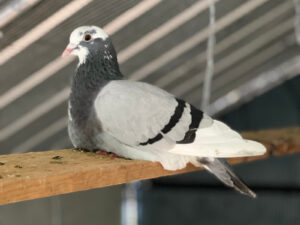
Pigeons are abandoned all the time. Millions of domestic pigeons are kept as pets, raced, or used commercially in the United States leading to large numbers being abandoned. Unfortunately, domestic pigeons have no survival skills in the wild. They have never had to learn how to find food, water, or shelter as it has always been provided for them. They haven’t learned how to evade predators and often time their fun and funky coat colors prevent them from even blending in with the background.
Most of the time, if we are called about a domestic pigeon and they are not able to be secured, the majority “disappear” (get killed by predators) within a week with a select few lasting one month in the wild. The vast majority come with heavy parasite loads, respiratory issues, horrible injuries, and completely emaciated. Let’s not forget the potential to spread the parasites to wild birds, them disturbing the wildlife’s habitat, and the negative impact introducing a non-native species to a native habitat has on the biodiversity.

Most people will walk by a pigeon in need. Some because they don’t want to take on a project of finding them help but others simply because they don’t know this pigeon needed rescuing. So here’s a quick guide on telling a domestic from a feral (no true wild pigeons left) pigeon.
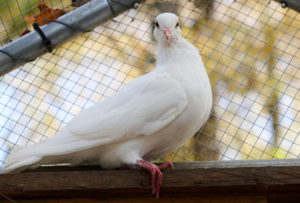
#1: Solid White Coloration
It is very, very, very rare that you would find an albino pigeon in the wild. Those solid white pigeons you see on the street are often white homing pigeons released during dove releases or King pigeons that were raised for meat and escaped live markets. In both cases, these poor babies are generally only a few weeks old with the majority being 4-6 weeks of age. The occasional white homing pigeon may be used in racing but they would be banded which leads to our next way to tell domestic vs. feral.
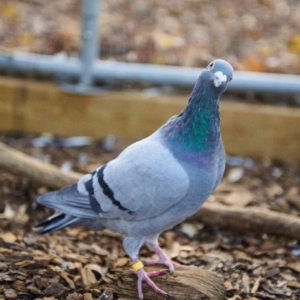
#2: Look For A Leg Band
If a pigeon has a leg band, they are domestic. They need your help. Oftentimes racing pigeon owner will tell you to just leave the pigeon alone and they will find home. What they don’t tell you is that on their races, they average a 60% loss of pigeons and oftentimes will cull racers that lose the race. You can learn more about pigeon racing here but as for now know that all banded pigeons need rescuing!
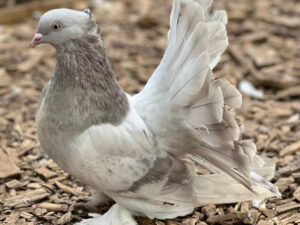
#3: Odd Appearances
If you see a pigeon with feathered feet, a head crest, a puffy chest, giant fantail, or any other out of the blue characteristics, they are domestic. Fancy pigeons as they are so called have one of the lowest survival rates. As ornamental pets, these birds are often kept indoors. If they have a rescue band on them, they may be someone’s pet so be sure to give them a ring. If not, they most likely were abandoned by either a breeder who didn’t think they were up to par with the breed standard or because someone didn’t want them anymore. They generally can only make it a day or two on the streets especially since a lot of fancy breeds of pigeons have less flight capabilities due to the way they were bred. Other things to look for are pigeons that are much larger or smaller than your average pigeon or do they have an abnormal beak such as a very long or short one.
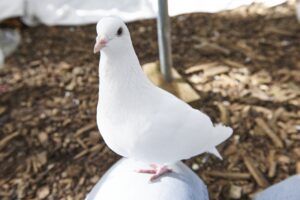
#4: Watch That Behavior
Sometimes well meaning people rehabilitate injured baby pigeons. They then think they are being kind and release them back into the wild. If a feral pigeon grows up in captivity with no feral pigeons to teach it skills, it can no longer survive in the wild. With these birds, they are often trying to do stuff like land on you or walk right up to you separately from the flock. They often aren’t integrated into the flock and you will see them possibly near a flock of pigeons but obviously outside it. Domestic pigeons will oftentimes exhibit these behaviors to but that pigeon is in need of rescuing.

#5: Unique Colors
A pigeon may not have a band or funky features, but the color pattern may seem strange. If you see any abnormal colored pigeons, it is certainly worth shooting a photo to a rescue to tell if they are domestic. It doesn’t matter where you live, we at Dreaming of a Chance are always happy to help you tell if you have a domestic or feral pigeon on your hands.

With these tricks in your hand, you’ll be able to tell a domestic pigeon from a feral with ease. It is also extremely helpful to be knowledgeable on common domestic pigeon breeds so you can recognize them at a glance. If you ever run into trouble identifying a domestic vs. a feral pigeon, please feel free to shoot us a text at 845-239-7257 or email us at dreamingofachance@gmail.com .
